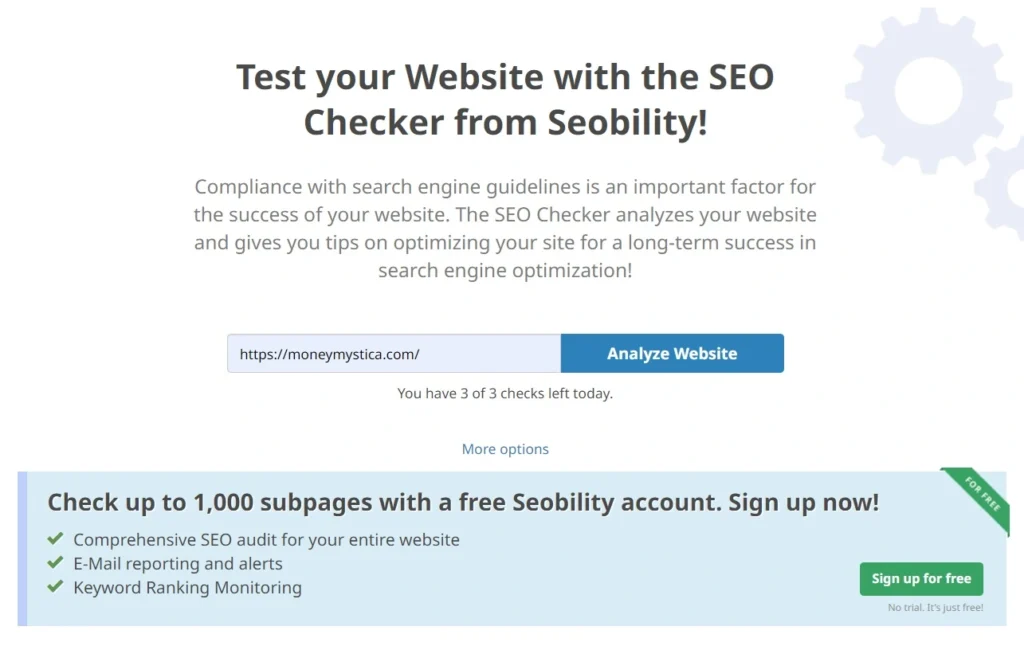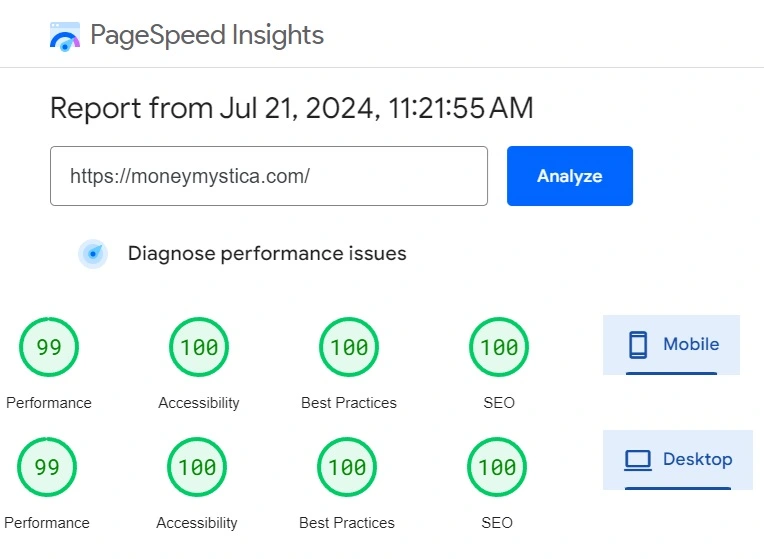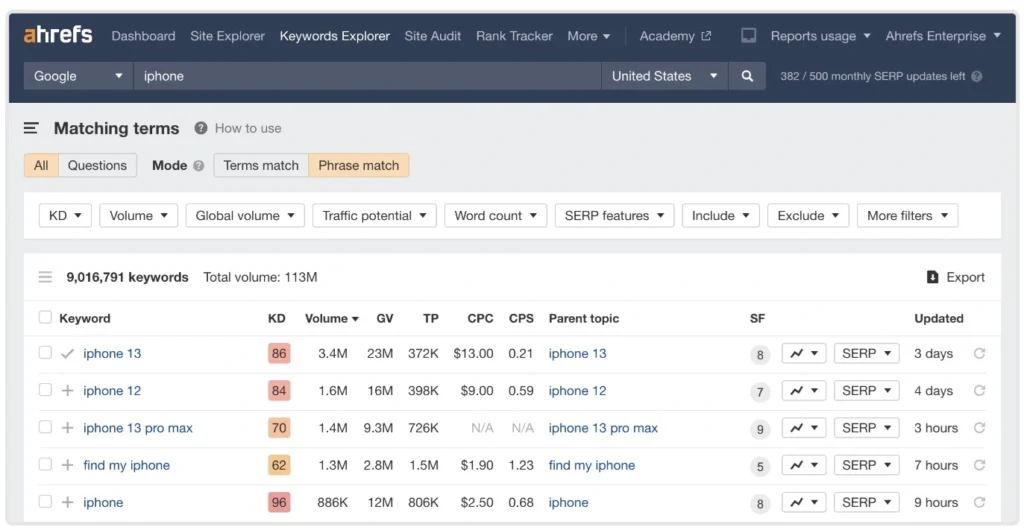Hi friends, today’s blog is essential for those beginners who struggle to get organic traffic instead of doing all search engine optimization (SEO) techniques to improve their WordPress website or any platform-based site’s visibility and fail to attract organic traffic.
we’ll explore the ultimate guide to SEO with 10 Proven Strategies to Improve Organic Traffic and Boost Website Visibility and 15 expert tips to skyrocket your organic traffic and boost website visibility. Discover top techniques, effective ways, and best practices to optimize your site, drive sustainable growth, and achieve top search rankings in 2024. So let us get started:
- What is Keyword Research?
- What is On-Page SEO?
- What is Content Optimization?
- What is Mobile Optimization?
- Why is Site Speed Important?
- What are Backlinks?
- What is Evergreen Content?
- What is User Intent?
- Why Use Social Media?
- What is Email Marketing?
- Why Collaborate?
- Why Use Analytics?
- Why Adjust Your Strategies?
What is Keyword Research?
Keyword research involves identifying the words and phrases that potential visitors use when searching for content related to your website. This foundational step helps you understand what topics are important to your audience and how to tailor your content to meet their needs.
How to Conduct Keyword Research:
- Use Keyword Research Tools: Tools like Google Keyword Planner, Ahrefs, and SEMrush provide insights into search volumes, keyword difficulty, and related terms.
- Analyze Competitors: Examine the keywords your competitors are ranking for. This can uncover opportunities you might have missed.
- Long-Tail Keywords: Focus on long-tail keywords (phrases with three or more words) as they often have lower competition and more specific search intent.
- User Intent: Understand the intent behind keywords. Are users looking for information, looking to make a purchase, or seeking a specific service?
Practical Tips:
- Create a list of primary and secondary keywords.
- Incorporate these keywords naturally into your content.
- Regularly update your keyword strategy based on performance and trends.
What is On-Page SEO?
The next step is On-page SEO, which refers to optimizing individual web pages to rank higher and earn more relevant traffic in search engines. This includes both the content and the HTML source code of a page.
Key Components of On-Page SEO:
- Title Tags: Your title tag should be compelling and include your primary keyword. It’s the first thing users see in search results.
- Meta Descriptions: A concise summary of the page content. Use it to entice users to click through from search results.
- Header Tags (H1, H2, H3, etc.): Use header tags to structure your content—H1 for the main title, H2 for the main sections, and H3 for subsections.
- URL Structure: Keep URLs short, and descriptive, and include keywords. Avoid long strings of numbers and irrelevant characters.
- Alt Text for Images: Describe images using keywords. This helps search engines understand your content and improves accessibility.
- Internal Linking: Link to other relevant pages on your site. This helps with navigation and distributes page authority across your site.
How to Conduct On-Page SEO
So to conduct page SEO first of all we need to make a checklist for best practices and collect information on what grounds On Page SEO is effective, which mainly involves technical and fundamental analysis. Various tools (FREE & PAID) which almost give us about 80%-90% of what is needed to improve our website.
Let us take MoneyMystica.com today for example and understand with FREE SEO Tools.

Further, you should use a clear and descriptive H1 tag for each page individually and include your target keyword in the first 100 words of your content. Write meta descriptions that are under 160 characters. Ensure all images have alt text describing their content.
What is Content Optimization?
Content optimization ensures your content is written in a way that is accessible to your audience and optimized for search engines. This involves improving readability, relevance, and searchability.
Steps to Optimize Content:
- High-Quality Content: Focus on creating content that provides real value. This includes thorough research, accurate information, and actionable insights.
- Keyword Integration: Integrate your keywords naturally throughout the content without keyword stuffing.
- Readability: Write in a clear, concise, and engaging style. Use short paragraphs, bullet points, and subheadings to break up the text.
- Multimedia Elements: Use images, videos, and infographics to enhance the content. These elements can improve engagement and shareability.
- Content Updates: Regularly update your content to keep it current and relevant. Outdated content can hurt your rankings and credibility.
Practical Tips:
- Use tools like Hemingway Editor or Grammarly to improve readability.
- Ensure your content answers common questions and provides solutions to problems.
- Update statistics and data regularly to reflect the most current information.
- Use relevant and high-quality images with proper attribution.
What is Mobile Optimization?
Mobile optimization ensures that your website performs well on mobile devices. Use a responsive design that adjusts to different screen sizes, optimize images and minimize JavaScript for faster loading times, ensure touch-friendly navigation with easy-to-tap buttons and readable text, and avoid pop-ups to enhance mobile user experience.
A mobile-friendly website is designed for mobile devices and can provide a better experience for users, leading to higher engagement and conversion.
- Responsive Design: Use a responsive design that automatically adjusts to different screen sizes.
- Fast Loading Times: Optimize images, use browser caching, and minimize JavaScript to improve loading times.
- Touch-Friendly Navigation: Ensure buttons and links are easy to tap with a finger. Avoid small clickable areas.
- Readable Text: Use a font size and style that is easy to read on smaller screens.
- Avoid Pop-Ups: Pop-ups can be difficult to close on mobile devices and may lead to a poor user experience.
Practical Tips:
- Test your site’s mobile-friendliness using Google’s Mobile-Friendly Test tool.
- Prioritize loading speed by compressing images and enabling lazy loading.
- Simplify navigation and ensure all clickable elements are large enough for mobile users.
- Regularly test your site on various devices and screen sizes.
Why is Site Speed Important?
Site speed is a crucial factor in user experience and search engine rankings. Faster websites provide a better user experience and are favored by search engines like Google. You can use free tools to test and monitor your page’s performance and check page speed tests.

- Optimize Images: Compress images without losing quality. Use formats like WebP for better performance.
- Minimize HTTP Requests: Reduce the number of elements on your page that need to load.
- Enable Browser Caching: Store static files locally in the user’s browser to reduce load times for repeat visitors.
- Minify CSS, JavaScript, and HTML: Remove unnecessary code to improve load times.
- Use a Content Delivery Network (CDN): Distribute your content across multiple servers to reduce latency.
Practical Tips:
- Use tools like Google PageSpeed Insights, GTmetrix, or Pingdom to analyze and improve your site’s speed.
- Enable gzip compression to reduce the size of your CSS, HTML, and JavaScript files.
- Regularly monitor your site’s performance and make adjustments as needed.
What are Backlinks?
Backlinks, or inbound links, are links from other websites to your site. They are a significant factor in SEO as they indicate to search engines that your content is valuable and credible.
How to Build High-Quality Backlinks:
- Guest Posting: Write articles for other websites in your niche with a link back to your site. ( the way of writing and publishing an article on another website or blog but remember to check its SPAM SCORE.) You can GUEST POST NOW here.
- Content Marketing: Create shareable content like infographics, research reports, and valuable articles that others will link to.
- Outreach: Reach out to bloggers, journalists, and influencers to promote your content and request backlinks.
- Broken Link Building: Find broken links on other websites and suggest your content as a replacement.
- Social Media Promotion: Share your content on social media to increase visibility and the likelihood of others linking to it.
Practical Tips:
- Focus on getting backlinks from reputable and relevant websites.
- Avoid link farms and low-quality directories as they can harm your SEO.
- Monitor your backlink profile using tools like Ahrefs or Moz to ensure the quality and relevance of your inbound links.
- Develop relationships with other content creators in your industry for mutual benefit.
What is Evergreen Content?
Evergreen content remains relevant and valuable over a long period. Unlike news articles or trend-based posts, evergreen content continually attracts traffic and engages readers.
Focus on timeless topics that remain relevant, such as “how-to” guides and tutorials; provide thorough and detailed information that answers all potential questions; periodically review and update the content to keep it accurate and current; and apply SEO best practices to ensure it ranks well in search engines.
How to Create Evergreen Content:
- Choose Timeless Topics: Focus on topics that are always relevant to your audience, such as “how-to” guides, tutorials, and in-depth explanations.
- Comprehensive Coverage: Provide thorough and detailed information that answers all potential questions on the topic.
- Regular Updates: Periodically review and update the content to ensure it remains accurate and current.
- SEO Best Practices: Apply SEO techniques to ensure the content ranks well in search engines.
Practical Tips:
- Examples of evergreen content include “How to Start a Blog,” “Beginner’s Guide to SEO,” and “Healthy Recipes.”
- Use keyword research to identify evergreen topics with consistent search volume.
- Structure your content with headings, subheadings, and bullet points for easy navigation.
- Add new information and update old statistics to keep the content fresh.
What is User Intent?
User intent refers to the reason behind a user’s search query. Understanding user intent helps you create content that meets the needs and expectations of your audience.
Types of User Intent:
- Informational Intent: Users are looking for information or answers to questions (e.g., “how to tie a tie”).
- Navigational Intent: Users want to find a specific website or page (e.g., “Facebook login”).
- Transactional Intent: Users are looking to make a purchase or complete a transaction (e.g., “buy running shoes”).
- Identify Common Queries: Use keyword research to identify the questions and topics your audience is searching for.
- Create Relevant Content: Develop content that directly addresses these queries and provides clear, valuable answers.
- Use Clear Titles and Headings: Ensure your titles and headings accurately reflect the content to match user intent.
- Include Calls to Action: Guide users to take the next step, whether it’s reading another article, signing up for a newsletter, or making a purchase.
Practical Tips:
- Analyze search engine results pages (SERPs) to understand what content ranks for your target keywords and why.
- Use tools like AnswerThePublic and Google’s “People also ask” feature to discover common questions related to your topics.
- Provide concise and clear answers at the beginning of your content, followed by detailed information.
- Ensure your content layout and structure are user-friendly and easy to navigate.
Regular Updates
Why are Regular Updates Important? Regularly updating your content ensures it remains accurate, relevant, and engaging. Search engines favor fresh content, which can improve your rankings and organic traffic.
How to Effectively Update Content:
- Review and Revise: Regularly review your content to check for outdated information, broken links, and other issues.
- Add New Information: Incorporate new data, trends, and insights to keep your content current.
- Improve SEO: Update keywords, meta descriptions, and other SEO elements based on current best practices and trends.
- Enhance Readability: Improve the content structure, add multimedia elements, and ensure the text is easy to read.
Practical Tips:
- Create a content calendar to schedule regular reviews and updates for your content.
- Use tools like Google Analytics to identify high-performing content that could benefit from updates.
- Encourage user feedback to identify areas where your content may need improvement.
- Combine updates with content promotion to maximize visibility and engagement.
Why Use Social Media?
Social media platforms are powerful tools for promoting your content, engaging with your audience, and driving traffic to your website.
How to Promote Content on Social Media:
- Choose the Right Platforms: Focus on platforms where your target audience is most active (e.g., Facebook, Twitter, LinkedIn, Instagram).
- Create Shareable Content: Develop content that is visually appealing and easy to share. Infographics, videos, and engaging images perform well on social media.
- Engage with Your Audience: Respond to comments, join discussions, and build relationships with your followers.
- Use Hashtags: Utilize relevant hashtags to increase the visibility of your posts and reach a broader audience.
- Schedule Posts: Use scheduling tools like Buffer or Hootsuite to consistently share your content at optimal times.
Practical Tips:
- Tailor your content to each platform’s format and audience. For example, use professional and detailed posts on LinkedIn, and more casual and visual content on Instagram.
- Encourage user-generated content by asking your audience to share their experiences related to your content.
- Collaborate with influencers or industry leaders to expand your reach.
- Monitor social media analytics to understand what type of content resonates with your audience and adjust your strategy accordingly.
What is Email Marketing?
Email marketing involves sending targeted messages to a list of subscribers to promote content, products, or services. It is an effective way to drive traffic and engage with your audience.
How to Use Email Marketing:
- Build an Email List: Encourage visitors to subscribe to your newsletter by offering incentives like exclusive content, discounts, or free resources.
- Segment Your Audience: Divide your email list into segments based on interests, behavior, and demographics to send more personalized content.
- Create Compelling Emails: Design visually appealing emails with engaging subject lines, valuable content, and clear calls to action.
- Automate Campaigns: Use email marketing tools like Mailchimp or ConvertKit to automate email sequences and follow-ups.
- Analyze Performance: Monitor open rates, click-through rates, and conversions to optimize your email campaigns.
Practical Tips:
- Use double opt-in forms to ensure you have a quality email list of engaged subscribers.
- Personalize your emails by addressing subscribers by name and tailoring content to their interests.
- Regularly clean your email list to remove inactive subscribers and improve engagement rates.
- Test different email elements (subject lines, images, calls to action) to see what resonates best with your audience.
Why Collaborate?
Collaborating with other bloggers, influencers, and industry experts can expand your reach, increase credibility, and drive more traffic to your site.
How to Collaborate Effectively:
- Identify Potential Partners: Look for individuals and brands that share a similar audience but are not direct competitors.
- Propose Mutual Benefits: Offer value in exchange for the collaboration, such as promoting their content, sharing your expertise, or co-creating content.
- Guest Blogging: Write guest posts for other websites and invite others to write for yours. This can introduce your content to new audiences.
- Webinars and Podcasts: Co-host webinars or podcasts with industry experts to provide valuable insights and attract a broader audience.
- Social Media Takeovers: Partner with influencers to take over each other’s social media accounts for a day, sharing content and engaging with their audience.
Practical Tips:
- Build relationships with potential collaborators through networking, social media engagement, and attending industry events.
- Clearly define the goals and expectations for each collaboration to ensure mutual benefit.
- Promote collaboration across all your marketing channels to maximize exposure.
- Follow up and maintain relationships with collaborators for future opportunities.
Technical SEO
XML Sitemap
What is an XML Sitemap? An XML sitemap is a file that lists all the pages on your website, helping search engines discover and index your content more effectively.
How to Create and Submit an XML Sitemap:
- Generate a Sitemap: Use tools like Yoast SEO (for WordPress) or online sitemap generators to create your XML sitemap.
- Include Important Pages: Ensure your sitemap includes all essential pages, including new and updated content.
- Submit to Search Engines: Submit your sitemap to Google Search Console and Bing Webmaster Tools to help search engines index your site.
Practical Tips:
- Regularly update your sitemap to include new content.
- Check for any errors in your sitemap using Google Search Console.
- Ensure your sitemap follows best practices, such as having a maximum of 50,000 URLs per sitemap.
Robots.txt
What is the Robots.txt File? The robots.txt file is a text file that instructs search engine crawlers on which pages to crawl and which to exclude from indexing.
How to Optimize Your Robots.txt File:
- Allow Important Pages: Ensure your robots.txt file allows crawlers to access and index essential pages.
- Block Irrelevant Pages: Prevent search engines from indexing pages that do not provide value, such as admin pages or duplicate content.
- Check for Errors: Regularly review your robots.txt file for errors that could prevent important pages from being indexed.
Practical Tips:
- Use tools like Google’s Robots.txt Tester to check for errors and verify your settings.
- Keep your robots.txt file simple and avoid overly complex rules.
- Ensure that critical resources like CSS and JavaScript files are not blocked, as they are necessary for proper page rendering.
Fix Crawl Errors
What are Crawl Errors? Crawl errors occur when search engines encounter problems while trying to access pages on your site. These errors can negatively impact your SEO and prevent your content from being indexed.
How to Identify and Fix Crawl Errors:
- Use Google Search Console: Regularly check Google Search Console for crawl error reports.
- Identify the Cause: Determine whether the errors are due to server issues, broken links, or other factors.
- Fix the Errors: Address the underlying issues, such as repairing broken links, ensuring server uptime, and properly redirecting missing pages.
- Monitor and Prevent Future Errors: Continuously monitor your site for crawl errors and take proactive measures to prevent them.
Practical Tips:
- Set up alerts in Google Search Console to be notified of new crawl errors.
- Use tools like Screaming Frog to crawl your site and identify potential issues.
- Implement 301 redirects for permanently moved content to preserve link equity and ensure a smooth user experience.
Why Use Analytics?
Analytics tools provide valuable insights into your website’s performance, user behavior, and traffic sources. These insights help you make informed decisions to optimize your content and SEO strategies.
How to Use Analytics Effectively:
- Set Up Google Analytics: Install Google Analytics on your website to track key metrics such as page views, bounce rate, and user demographics.
- Monitor Key Metrics: Focus on metrics that align with your goals, such as organic traffic, conversion rates, and engagement.
- Analyze User Behavior: Understand how users navigate your site, which pages they visit, and where they drop off.
- Track Conversions: Set up conversion tracking to measure the effectiveness of your marketing efforts and identify areas for improvement.
Practical Tips:
- Use Google Analytics’ custom reports and dashboards to track specific metrics relevant to your goals.
- Regularly review your analytics data to identify trends and areas for improvement.
- Combine analytics data with other tools, such as heatmaps and user surveys, to gain a deeper understanding of user behavior.
Why Adjust Your Strategies?
SEO and content marketing are dynamic fields. Regularly adjusting your strategies based on performance data ensures you stay ahead of trends and continue to improve your site’s performance.
How to Adjust Your Strategies:
- Review Performance Data: Use analytics to identify what’s working and what’s not. Focus on metrics like traffic, engagement, and conversions.
- Identify Opportunities: Look for opportunities to optimize underperforming content, target new keywords, and improve user experience.
- Experiment and Test: Conduct A/B tests to determine the effectiveness of different strategies, such as changes to headlines, calls to action, and content formats.
- Implement Changes: Make data-driven adjustments to your SEO and content strategies. Continuously monitor the impact of these changes and refine your approach.
Practical Tips:
- Stay updated with the latest SEO trends and algorithm changes to ensure your strategies remain effective.
- Encourage user feedback to understand their needs and preferences.
- Regularly review and update your keyword strategy to target new opportunities and stay competitive.
- Document your strategies and results to track progress and identify successful tactics.
Conclusion
Improving organic traffic to your AdSense-approved website is a multifaceted process that requires consistent effort and ongoing optimization. By implementing these detailed strategies, you can enhance your site’s visibility, attract more visitors, and ultimately increase your AdSense earnings.
Disclaimer: Remember, SEO and content marketing are long-term investments, so be patient, stay committed, and continuously refine your approach for the best results.
What is organic traffic and why is it important?
Organic traffic refers to visitors who find your website through search engines without paid ads. It’s important because it indicates good search engine rankings, which can lead to higher AdSense earnings and increased visibility.
How can I improve my website’s SEO?
To improve SEO, start with thorough keyword research to identify relevant terms, optimize on-page elements like title tags and meta descriptions, create high-quality and engaging content, and build high-quality backlinks.
How can I make my website mobile-friendly?
Use a responsive design that adjusts to different screen sizes, ensure touch-friendly navigation with easily tappable buttons, and use readable fonts. Optimize loading times and avoid pop-ups that can disrupt the mobile user experience.
How often should I update my content?
Regularly review and update your content to ensure it remains accurate, relevant, and aligned with current trends.
How can I improve my website’s loading speed?
Optimize images by compressing them, use browser caching, minimize JavaScript, and consider implementing a Content Delivery Network (CDN). Regularly monitor and address factors that may affect site performance.
Ashish Dwivedi is the founder and chief editor of MoneyMystica, a top resource for finance, insurance, and share market insights. Driven by a passion for empowering individuals to make informed financial decisions, Ashish uses his extensive knowledge and practical experience to offer clear and actionable advice.



